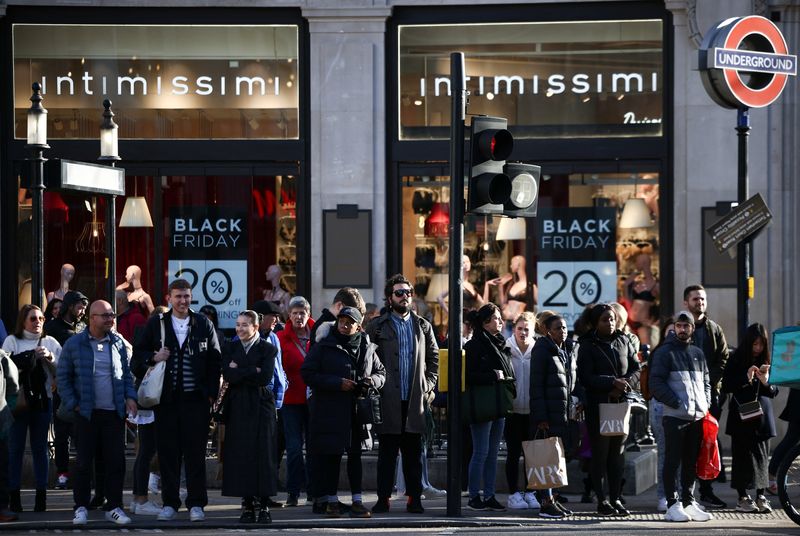By Alberto Chiumento and Paolo Laudani
(Reuters) – The rise of online shopping has led to many store closures, casting doubt on the future of shopping centers and high streets, but in Europe there are signs that stores are back in fashion and important to boost online sales.
European retailers are investing in physical stores to boost both online and offline sales as they face increasing competition from giant e-commerce companies such as fast-fashion group Shein.
They also want to capitalize on people’s renewed interest in visiting stores once COVID-19 lockdowns end, which has brought Saturday afternoon shopping back into fashion.
“I come to stores because I want to see things live, try them out and have them available immediately,” says Francesca Marini, 28, as she browses a shopping center in Rome. She said the wait when shopping online ruined the experience.
The total number of stores in Europe will decrease slightly, to 4.90 million in 2023, compared to 4.92 million the year before, according to data from market research firm Euromonitor. But sales area, measured in square meters, rose by almost 1% and should rise to 2.7% in 2028 compared to 2022, the data showed.
Retailers realize that it is difficult to retain customers without direct contact with them, says Thomas Joekel, portfolio manager at Union Investment, which owns shares in LVMH and Adidas (OTC:).
“This is easier to achieve if you have physical stores rather than just e-commerce,” he said. “On the e-commerce side, you can only see pictures, but you don’t feel anything, you don’t smell anything and you don’t talk to anyone, so it’s much harder to be optimistic or excited about a brand,” he said.
TRY IT BEFORE YOU BUY IT
Since the pandemic, sports retailers have seen increased demand for products such as running shoes and training sets as people make the most of getting outside.
“You look at the success of Adidas or North Face and others. I think there has definitely been a trend towards more outdoor activities, partly during the pandemic,” said Deutsche Bank analyst Adam Cochrane. “I think people realized they needed to get out and do things, and some of that behavior has stuck.”
French sports retailer Decathlon has added about 80 stores to its network this year, according to Global Chief Customer Officer Celine Del Genes, bringing the total number of points of sale worldwide to about 1,700.
Cisalfa, an Italian retailer that sells sportswear such as Nike (NYSE:)’s football boots and Under Armor (NYSE:)’s running T-shirts, which have about 160 stores in Italy, plan to open or renovate about 10 stores in the home market this year.
The company has expanded to 75 stores in Germany with the recent acquisition of SportScheck, adding 25 stores to its German portfolio.
MULTI-CHANNEL SHOPPERS
Having a physical store can increase online sales within a 20-minute drive of the point of sale by 10% to 20% as more customers interact across multiple channels, according to data cited by Cochrane.
“There is clear evidence, in both directions, that opening a store increases online sales near that store,” he said. “And conversely, if you close a store, there are indications that you won’t be able to fully recoup all those sales, either online or by transferring to another store.”
Stefan Reiner, Chief Sales Officer of mountain sports chain Oberalp, said: “The more stores there are in an area, the greater the interest in the online brand.”
To attract shoppers, Decathlon has hubs for repairing or renting equipment and areas where customers can exercise.
“Stores are offering new features such as showrooms and discovery stations to integrate physical and digital elements, facilitating the exploration, analysis and comparison of products,” Celine Del Genes, Chief Customer Officer, told Reuters.
In the Rome shopping center, Decathlon has placed two table tennis tables at the entrance of the store where people can play for free.
“It’s a nice idea: we can have fun in a place where we normally only come to buy,” one of the young players told Reuters as the table tennis balls flew by and his friends argued whether the shot was in or out was.
Spanish retailer Inditex (BME:), owner of the Zara brand, offers group fitting rooms where friends can try on clothes. The fitting rooms also feature touchscreens so customers can request different sizes or styles.
In Germany, online retailer Zalando already has fifteen physical stores in the country, while another is being built in Freiburg in the south.
Like other retailers, Zalando, which sells everything from swimsuits to Hugo Boss dresses, is battling increasing competition from Shein. The Singapore-based online retailer has adopted a ‘pop-up’ shopping strategy, opening stores in European or UK cities that close after a few days.
Industry experts believe that consumers prefer the human touch and the convenience and immediacy of purchasing in a store.

“Consumers are choosing to return to stores as they rediscover the leisure aspect of shopping,” RBC analysts said. They also like the convenience of click and collect and as people return to offices it means they are less confident about being at home. for a delivery, they said.
“Some people just want to buy a T-shirt and go to a party or school. If you have to wait two weeks, this is simply too long,” says Joekel from Union Investment.


